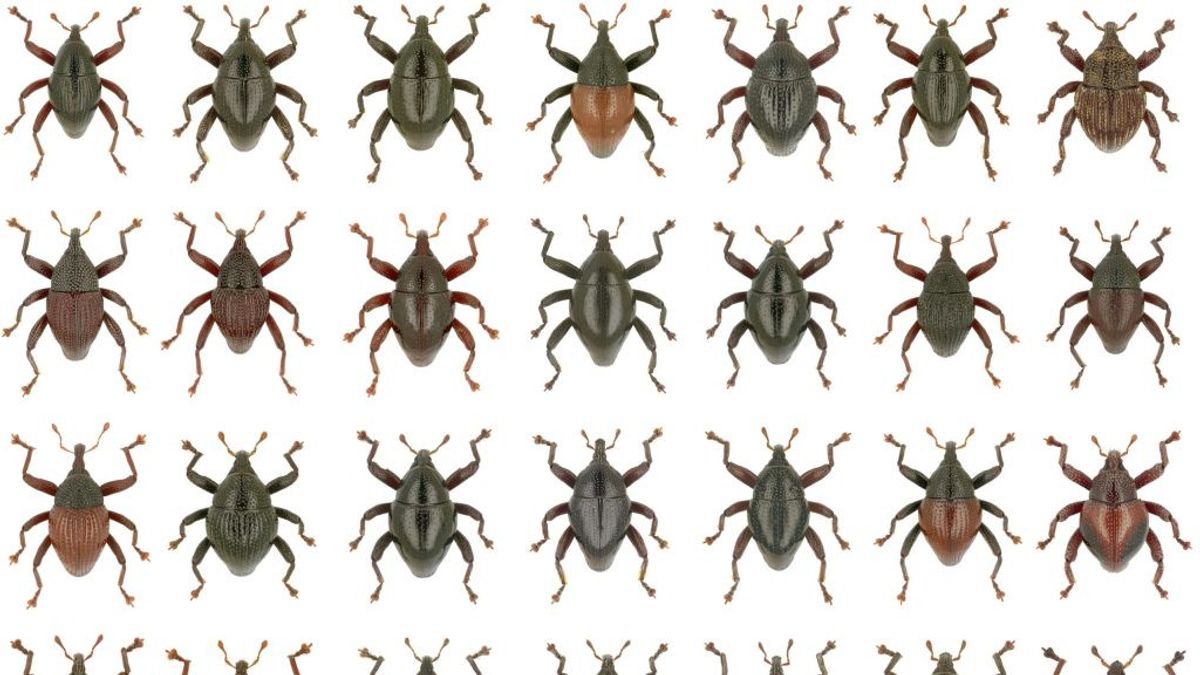JAKARTA - A total of 28 new types of snout beetles or Trigonopterus have been discovered in Sulawesi by the National Research and Innovation Agency (BRIN), recently. This discovery is useful for obtaining information as well as an inventory of insects in the country.
“Findings of new species are important for the interests of the nation and state, because most of our biodiversity has not been researched yet and has so much potential. In addition, taxonomic and systematic studies are the initial foundation for further studies such as conservation to bioprospection," said the Head of the BRIN Biology Research Center, Anang Setiawan Achmadi in his statement, Saturday, November 6.

The discovery of this new species fulfills previous findings, namely 103 types of Trigonopterus beetles in 2019, bringing the total number of Trigonopterus described on the island of Sulawesi to 132 species. The majority of the locations where the snout beetles were found came from Mount Dako and Mount Pompangeo, Central Sulawesi.
"Trigonopterus beetles are flightless snout beetles and live in isolated locations in mountain forests and have evolved rapidly over millions of years, so that the level of endemicity and biodiversity is very high," said one of the BRIN researchers, Raden Pramesa Narakusumo.

Several unique names were given to the 28 new species. One of them is named Trigonopterus gundala which is inspired by the beetle's body color which is similar to the Indonesian superhero, Gundala Putra Petir.
Then, Trigonopterus unique-because one type of beetle has a very small body compared to other types. In addition, there is also a beetle named Trigonopterus moduai, inspired by the typical Toli-toli dance.
Then Trigonopterus ewok whose name is taken from the fictional character of the Star Wars film, and Trigonopterus corona according to the time a new type was discovered, namely when the COVID-19 pandemic hit Indonesia.
"The unique naming was given because giving names to hundreds of new species is a challenge in itself, because the name of each species cannot be the same as described by the International Code of Zoological Nomenclature," explained Pramesa.
"Therefore, in addition to using the naming of the type of character or the name of the location, one can also use unique names such as the name of a fictional character, a regional dance or the name of a character," he added.
The researchers have carried out analysis of the mitochondrial DNA fragment barcode, COX I. As well as comparative morphology analysis, especially by means of genital dissection and also high-resolution macro photography before drawing conclusions on the delineation of these new species.
They, the researchers also believe that the findings of the new species that have been published in Zookeys in October 2021, are still only a part of the entire Trigonopterus species on the island of Sulawesi.
The English, Chinese, Japanese, Arabic, and French versions are automatically generated by the AI. So there may still be inaccuracies in translating, please always see Indonesian as our main language. (system supported by DigitalSiber.id)










